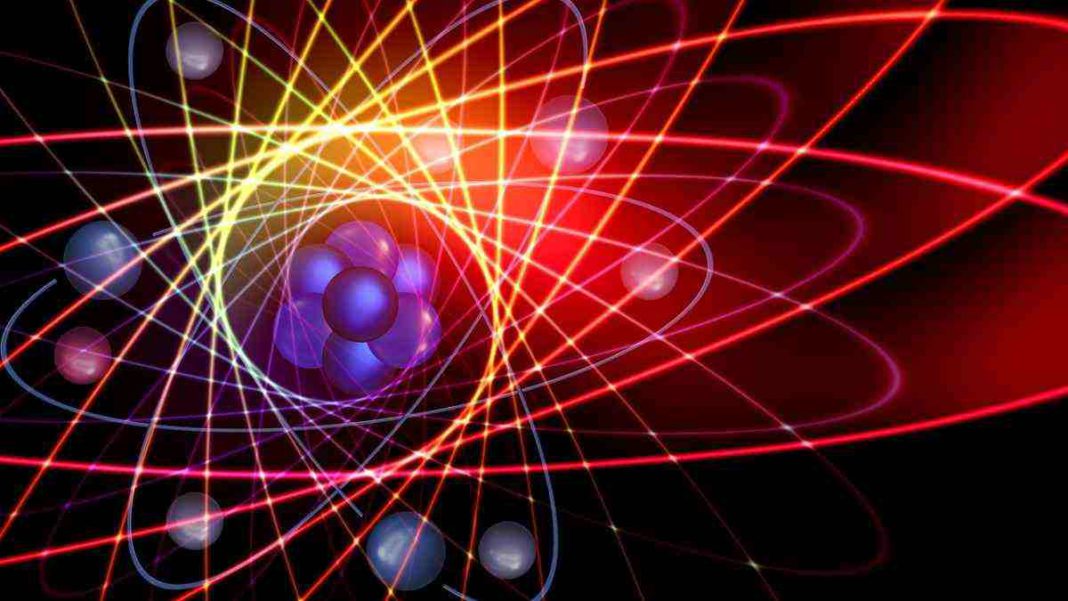UNITED STATES: Tigran Sedrakyan, an assistant professor of physics at the University of Massachusetts, and his team have achieved a ground-breaking discovery by introducing a new phase of matter known as the “chiral bose-liquid state.”
This significant breakthrough, published in the prestigious journal Nature, breaks another wall for a deeper understanding of the fundamental nature of the physical world.
In our everyday lives, we generally perceive matter in three classical states: solid, liquid, and gas. However, when scientists venture into the realm of extreme conditions, such as temperatures approaching absolute zero or investigating entities on a minuscule subatomic scale, the behavior of matter takes on an entirely different character.
These so-called quantum states of matter are far more complex and intriguing than anything we experience in our day-to-day lives.
Assistant professor Sedrakyan and his team have dedicated years to exploring these extraordinary quantum states, focusing particularly on the concept of “band degeneracy,” “moat bands,” or “kinetic frustration” in strongly interacting quantum matter.
In a typical system, particles interact with each other in predictable ways. However, in a frustrated quantum system, these interactions can lead to infinite possibilities and give rise to novel quantum states. Sedrakyan and his colleagues set out to engineer a “frustration machine” in the form of a bilayer semiconducting device.
By introducing a local imbalance between the number of electrons and holes in the device’s layers, they created a scenario akin to a game of musical chairs, where electrons were forced to scramble and consider multiple possibilities for their “seating” arrangement.
This engineered frustration resulted in the emergence of a new state of matter known as the chiral bose-liquid state. This state exhibits remarkable characteristics, such as the freezing of electrons into a predictable pattern when approaching absolute zero.
Moreover, the emergent charge-neutral particles in this state exhibit a specific spin orientation (a property of subatomic particles) —either clockwise or counterclockwise—that remains unaffected by collisions with other particles or the introduction of a magnetic field. This robust spin property can even be harnessed for fault-tolerant encoding of digital data.
A particularly intriguing aspect of the chiral bose-liquid state is the collective behavior of its particles when an external particle collides with one of them.
Instead of behaving individually, all the particles react in exactly the same way, a phenomenon attributed to the long-range entanglement present in this quantum system.
Observing the chiral bose-liquid state presented a significant challenge due to its elusive nature. To overcome this obstacle, the team of scientists, including theoretical physicists Rui Wang and Baigeng Wang from Nanjing University, as well as experimental physicists Lingjie Du from Nanjing University and Rui-Rui Du from Peking University, devised a theory and an experiment that utilized an extremely strong magnetic field.
This magnetic field allowed them to track the movements of electrons as they vied for their metaphorical chairs.
According to Lingjie Du, the semiconductor bilayer’s edge experiences helical-like transport because electrons and holes are moving at the same speed there. This transport behavior could be further modulated by external magnetic fields, gradually separating the electron and hole channels under higher fields.
Through meticulous magneto-transport experiments, the researchers successfully obtained the first compelling evidence for the chiral bose-liquid state, also referred to as “excitonic topological order” in their published paper.
This groundbreaking work not only sheds light on the fascinating behavior of matter under extreme quantum conditions, but also opens up new possibilities for harnessing quantum phenomena for practical applications.
Numerous prestigious organisations, including the National Natural Science Foundation of China, the Chinese Academy of Sciences, the Xiaomi Foundation, the National Science Foundation, and the Programme for Innovative Talents and Entrepreneurs in Jiangsu, supported the research.
As we continue to delve deeper into the quantum world, discoveries like the chiral bose-liquid state bring us one step closer to unraveling the mysteries of the physical universe and pushing the boundaries of scientific knowledge.
Also Read: Understanding Quantum Measurement Paradox: The Mystery of Observation and Reality



